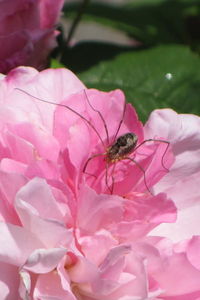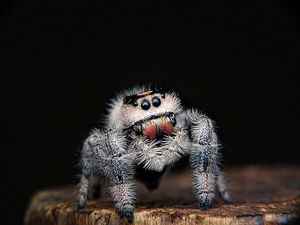A New National Emblem
Submitted by Dan MacIsaac
Canada is a land of plenty. But it is a state poor in symbols. Our national emblems are few and time-worn. Canada’s plant is the maple tree, which, in an annual strip tease, releases red leaves clogging our gutters. In winter, the same tree drips sweet sap, clogging our arteries. Our national animal is a rodent, a buck-toothed workaholic with a tail like a grilled ping pong paddle, whose labours dam our ditches and clog our pipes. And the country cannot decide on a national bird—will it be the kleptomaniac gray jay or the bandit-masked Canada goose, the fowl that fouls our parks? Or maybe the bipolar common loon whose solo yodel breaks the tranquility of cottage life and whose brass coin clogs our parking meters?
The task of patriotic poets should be to expand the imagery of the Canadian tribe. I propose that poets promote a national bug. This will put us on the map. No other state has such a thing, to my knowledge, other than Transylvania which boasts of the mosquito as its national insect.
Let us consider some candidates. The termite—not nation-building. The silverfish—too bookish. The earthworm—too spineless. The bedbug—too Hollywood. The blood-sucking leech which infests lakes (and courthouses) from coast to coast—too ravenous. The dragonfly-- too sequined, too glittered, too ice dancer, too synchro swim. The wasp infesting picnics —not multi-cultural, too invasive, way too WASP. The hissing cockroach—too localized--found only on Parliament Hill.
After conducting an exhaustive, scholarly search of Canlit for creepy crawlies, it is clear that the spider is the crowd favourite among poets. Though not strictly an insect, it is a member of the genus Crepitus. Just kidding. Insects, spiders and PEI prize lobsters are all members of the phylum Arthropoda. And the Great Northern Spider is an OCD artist and a prophetic lady-killer. Here is a small sample of spider celebration in Canadian verse:
From Lorna Crozer’s “Spider”:
The spider in the heart
of the rose
is a ventriloquist.
It sings on the rose’s tongue.
From Michael Ondaatje’s “Spider Blues”:
Your CanLit News
Subscribe to Open Book’s newsletter to get local book events, literary content, writing tips, and more in your inbox
Spiders like poets are obsessed with power.
They write their murderous art which sleeps
like stars in the corner of rooms,
From Joe Rosenblatt’s “The Spider”:
In his crocheted embassy
the spinning butler
entertains the lady flies –
From Ralph Gustafson’s “Spider Webs Prophesy Sunshine”:
its morning pulleys
rigging prismatic treason.
True poets have always paid homage to the spider. Ovid eulogies the arch-spinner and goddess-baiter Arachne. Crotchety Alexander Pope in his “Essay on Man” praises “The spider’s touch, how exquisitely fine!” Young Will Shakespeare revels in Queen Mab’s exquisite carriage: “Her wagon spokes made of long spinners’ legs” and “Her traces of the smallest spider’s web.” Emily Dickinson gushes over how the spider “holds a Silver Ball” and “His Yarn of Pearl – unwinds.” And she marvels at how “A Spider sewed at Night/ Without a Light/ Upon an Arc of White.” Robert Frost’s “Design” spider is cherubic: “dimpled,” “fat and white.” Miguel de Unamuno in his Last Poems lauds: “Madre Araña está tejiendo/ rayos de luna plateada” (Mother Spider is weaving/ beams of a silver moon).
To recap, in Canada we have only a handful of symbols to rally around: a dominion dead leaf, a national sticky syrup boiled up in a distinct society, and a patriotic kind of giant water rat. Our old iconography is impoverished. It is time for an inspirational bug to be emblazoned on our minds and flags, our duffle bags and sweat pants. And in our poetry. I nominate the spider. A pox on arachnophobes. Rampant spider imagery would boost the national spirit.
The views expressed in the Writer-in-Residence blogs are those held by the authors and do not necessarily reflect the views of Open Book.
Raised on Vancouver Island, Dan MacIsaac is a third-generation lawyer and served for ten years as a director on the board of the Environmental Law Centre at the University of Victoria. His poetry, verse translations, and fiction have appeared in a wide variety of literary journals and magazines. One of his stories was short-listed for the 2009 CBC Literary Awards, one of his poems received the 2014 Foley Prize from America Magazine, and another poem was short-listed for the 2015 Walrus Poetry Prize. He lives in Victoria. Cries from the Ark is his first poetry collection.




